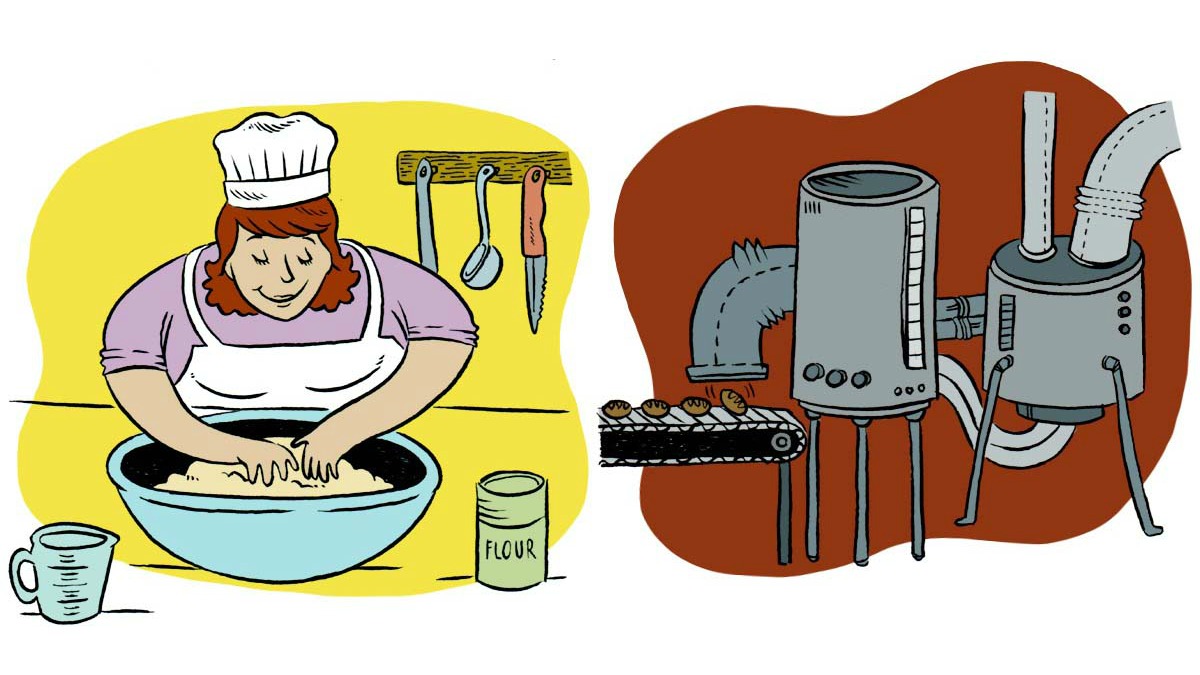The transition from lots of mid-size farms toward fewer, behemoth operations that we’ve discussed in Farm Size Matters didn’t come out of nowhere. The major appeal of extra-large farms, and the reason it’s so hard to slow their growth in the market, is that their crops funnel into a massive, streamlined chain of production that can whittle the price of a loaf of bread from the grocery store down to a couple bucks.
For every loaf of bread you buy, wheat farmers are only getting a tiny slice — in 2014, farmers received about 15 cents per $2.69 loaf of bread. Big farms can take a low price because they are selling so much — which makes small and mid-size wheat farms far less competitive. We put together a comparison of how a small-batch, artisanal loaf of bread from your local bakery might be made vs. a bagged loaf from the grocery store.
Special thanks to: Rick Easton, Pete Minow, Elizabeth Hayes/Camas Country Mill, Norm Oeding, Tyler Zimmerman, and the USDA National Agricultural Statistics Service.
To be able to function more smoothly and expand, the artisanal process depends on a couple of things: More infrastructure (flour mills have largely disappeared) and demand. In the case of the latter, that’s where you, dear reader and eater, come in.





